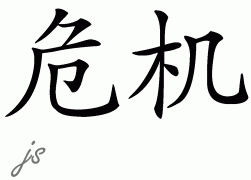I’ve read First, Break All the Rules. I’ve taken the Strengthsfinder test twice, and the only strength I had in common each time was individualization. There are a lot of places where I don’t shine as a manager and a leader, but one thing that I naturally do well is get to know the people I’m working with to understand what they need from me. Armed with that information, I work differently with different people.
So why has it taken me this long to realize that the monkeys need different types of discipline?
Monkey #1 is sensitive and empathic. When he wants to get my attention, he hugs me, tells me that he loves me, or goes really whiny. For the most part, he’ll listen when I just ask him to behave. When he doesn’t, he seems to need second chances.
Monkey #2 is tougher. He’s a boundary pusher. He’s that typical kid in the playground who, when he likes a girl, will pull her pigtails. He needs to be told as soon as possible that what he’s doing is wrong, and get a swift time out. Otherwise he gets too attached to whatever he’s doing to stop. Once his misbehavior escalates, his response to any discipline is a tantrum.
I guess I’ve always known that different kids need different kinds of discipline. But putting that principle into action is difficult. For one thing, they’re twins. I’m used to the same thing working for both of them. Another issue is that unlike with adults, changing the way I behave with different kids seems unfair. They don’t really get why I’m doing it, and even if I tried, I couldn’t explain it to them. It also seems to fly in the face of conventional wisdom that what kids need most is consistency.
Does it work if you consistently individualize? Guess I’ll find out soon enough.

 A few months ago, I was speaking with a client who I’ve become friends with over a couple of years of working together. She has 7 year old twin boys and my monkeys are three, so in addition to talking about work I often turn to her for twin management advice. She’s super smart, has a great sense of humor, and seems amazingly on top of her shit.
A few months ago, I was speaking with a client who I’ve become friends with over a couple of years of working together. She has 7 year old twin boys and my monkeys are three, so in addition to talking about work I often turn to her for twin management advice. She’s super smart, has a great sense of humor, and seems amazingly on top of her shit.


